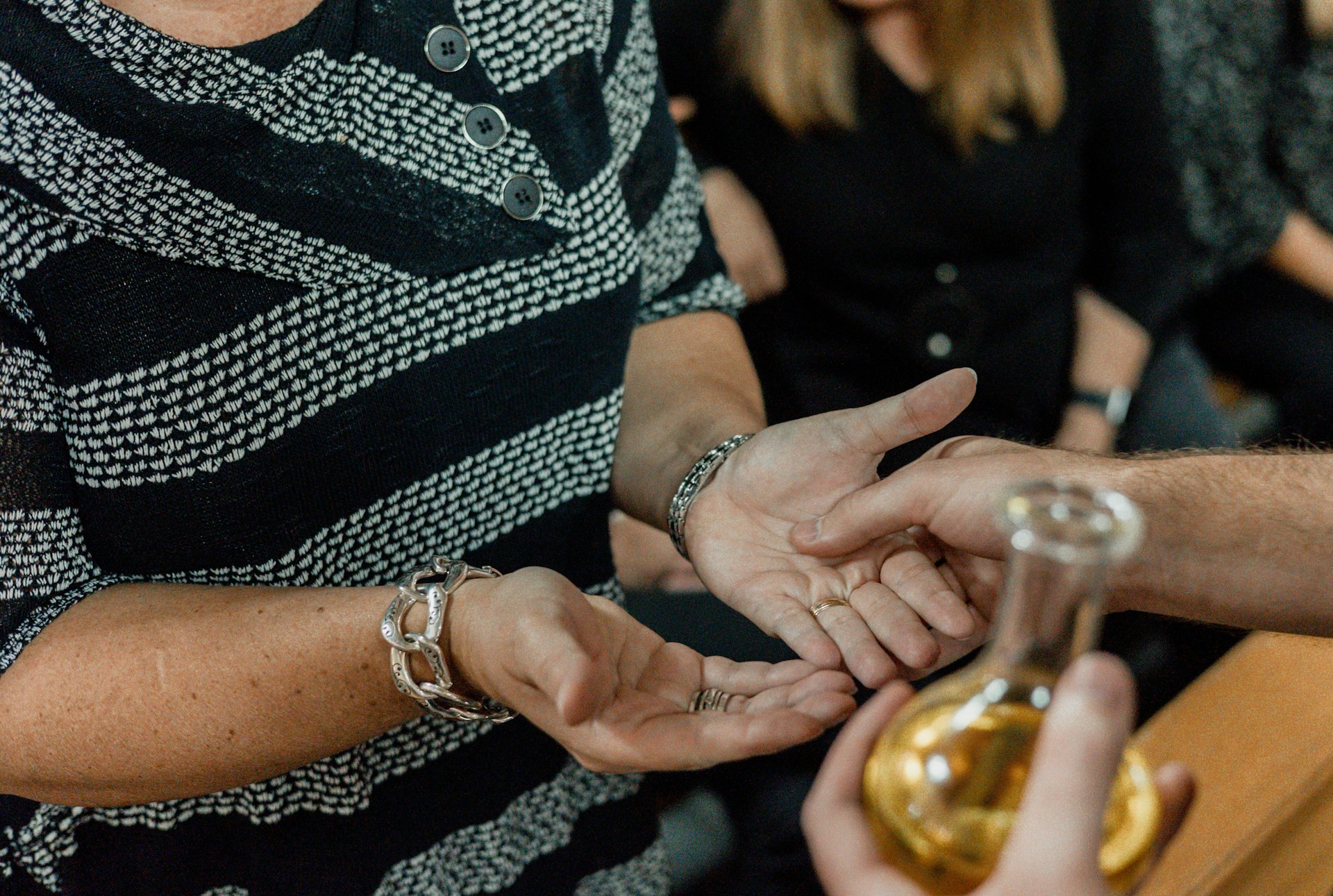Anointing the Sick – Part I
National Liturgical Council

History
The Letter of James states that the elders of the community would visit the sick and pray with and lay their hands on them and anoint them with oil. In ancient cultures oil had many uses. It was a staple for use in cooking, it provided light when used in lamps and was also used for medical reasons. The most common oil used in the Middle East and still today is that which comes from the olive.
As one writer has said "To anoint is the one way to acknowledge the blessings that God gives to his people." In the first two centuries members of the Church would actually take the blest oil home for use when they became ill. That blest oil could either be used by applying it to the affected part of the body, or even drunk!
Over the centuries the use of anointing changed and by the ninth century the anointing of the sick came to be associated with the care of the dying. Priests would be called often to hear the confessions of those dying (in some instances for those not baptised they would be baptised on their death beds) and in the ritual books we see that anointing followed Reconciliation and then the dying person would receive Viaticum (Holy Communion) as the last sacrament before death.
Over time the Sacrament of Penance and the Anointing became separated and Anointing took on the meaning of a sort of consecration before death. With that understanding many people would delay anointing for as long as possible because it came to be seen as the last sacrament. By the 14th century the order of the sacraments for the dying had become Penance, Viaticum and lastly Anointing – often referred to as Extreme Unction.
Reforms of Vatican II
The Fathers of the Second Vatican Council reviewed the understanding of the sacrament of anointing and said that ‘it is not a sacrament for those only who are at the point of death…As soon as any one of the faithful begins to be in danger from sickness or old age, the fitting time for that person to receive the sacrament has certainly already arrived’. In the Introduction to the Pastoral Care of the Sick, Pope Paul VI also said, ‘the sacrament may be repeated if the sick person recovers after being anointed and then again falls ill or if during the same illness the person’s condition becomes more serious’. In describing the celebration the introduction states that there are three aspects to the celebration: the Prayer of Faith, the Laying on of Hands, and the Anointing with Oil.
Prayer of Faith
The prayer for the healing of the sick comes from the whole community of the Church, and even if there are only a few present ‘it is the people of God who pray in faith’.
Laying on of Hands
Jesus used touch in the gospels where it is recorded that he healed the sick. The Laying on of Hands has been understood as being a sign of blessing from God and the calling forth of the Spirit so that the person might find healing and strength in their time of need. ‘They brought the sick with various diseases to him; and he laid his hands on every one of them and healed them.’ (Luke 4:40)
Anointing with Oil
Again it is recorded in the Gospels that the disciples went out in Jesus’ name and anointed people who were sick, and they were cured. (Mark 6:13)
As we have already seen the use of oil for healing was already an established practice in the ancient world. For the church to use oil is the added understanding of the power and presence of God’s Spirit in this sign. For that reason a generous amount of oil should be used so that the person can experience the full effect of this sign. The introduction reminds us that the oil should not be wiped away after the anointing.
This article was originally published in ‘Healing Ministry’. © Diocese of Parramatta. 2001, 2007. Reprinted with permission.
